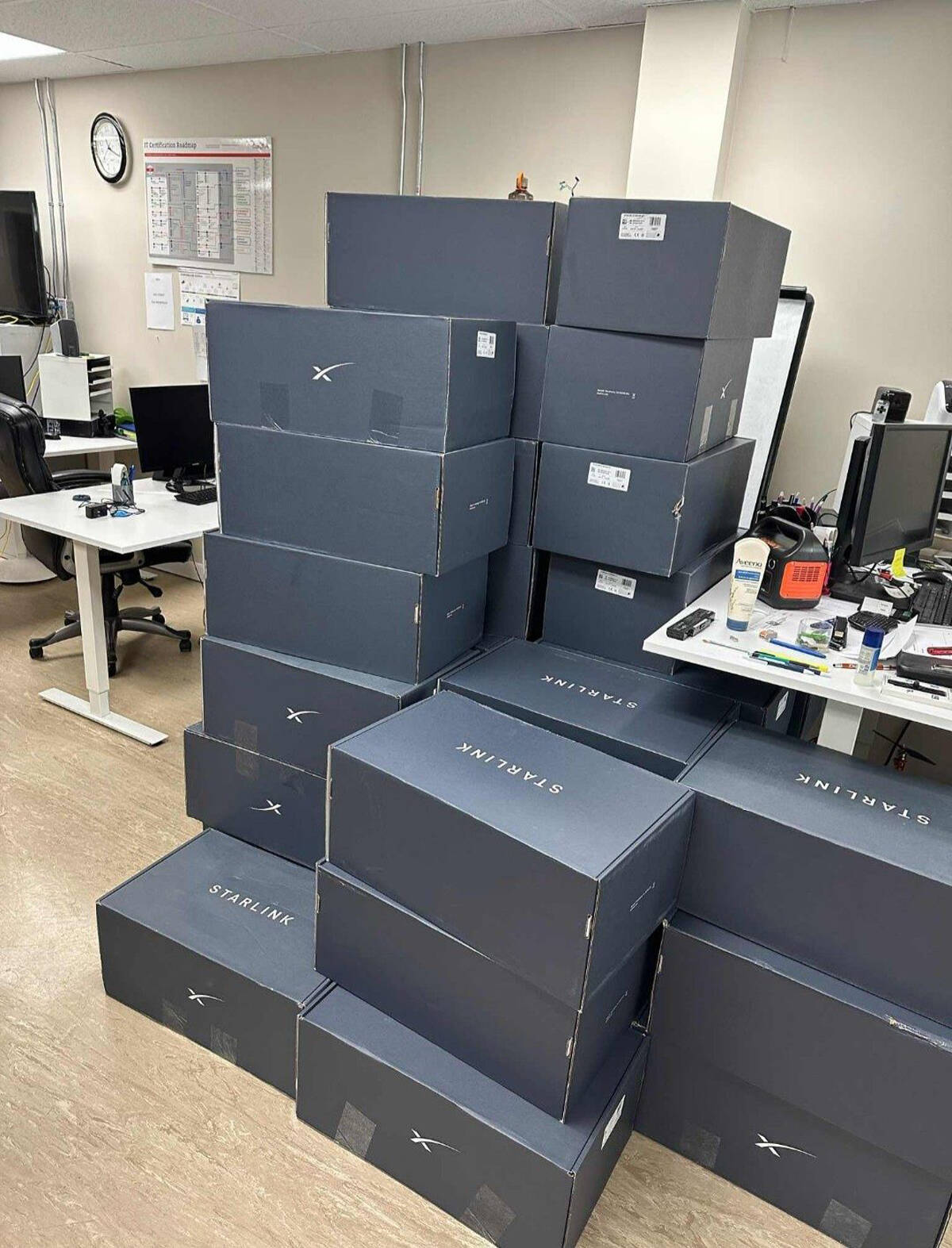Forty households in Lutselk’e are getting a Starlink hook up thanks to a grant accessed by the Native Women’s Association of the NWT.
Executive director Brenda Norris told Inuvik Drum she had secured a grant of $7 million to connect residents to the satellite service at a rate of $400 million per year.
“We’re doing a bit more for the communities that will probably never see fibre optic,” she said. “We really want to see what a different it would make to have high speed Internet.
“We want to blanket the community, so we wanted to get as many of the units as we can.“

Norris added there’s enough funding to cover connection fees — $140 a month according to Starlink’s website — for residents until 2026. Native Women’s Association is also purchasing the satellite dishes.
As to what happens after 2026, Norris said plans were still in the works.
“I believe the communities should not have to pay for this,” she said. “Most of the people in these communities are on income assistance, they don’t make a lot of money anyway, but they are the ears and eyes of the North.
“There’s a lot of kids in the community that are really smart. I really believe we an create work by teaching kids these things. With a high speed connection, you can work from anywhere in the world. You could be a cybersecurity person in San Francisco or Australia and stay in your community. It doesn’t have to always been about resource extraction. Kids could be creating games and apps and selling them online.
“That’s my goal. I really want to see communities have a way to create their own income.”
Currently in Lutselk’e, internet is so slow Norris said it can take up to two-hours to complete a money transfer.
As a consequence, artists have difficulty selling their products online, people are unable to access remote services available elsewhere in the territory and the community has been effectively left behind.
“The GNWT does a lot of videos and online stuff for mental health,” said Norris. “Communities like Lutselk’e don’t have access to that. They can’t stream videos. All this counselling is online but it doesn’t do anyone in Lutselk’e any good, they don’t have any access to it. When they put a call out for something, no one in Lutselk’e will know.
“The Minister of Public Safety for Canada went there with his staff and I warned them it would be slow. His staff came back to me and said ‘holy cow, I didn’t realize it could be so bad.’”
Safety factor
High-speed connection could do a lot for the community, said Norris. When the system is in place, she said residents will be able to access important services including online counselling, distance education and online markets. Collaboration on cultural preservation, including language, storytelling and traditional knowledge could benefit from high connectivity as well.
Another big reason the Native Women’s Association is pushing this, she added, was to provide women in smaller communities with information on how to keep safe.
“We do quite a bit of work around Missing and Murdered Indigenous Women and Girls,” she said. “That’s another reason we want this - it allows women in these communities to go online and get help.
“Right now, if there’s a woman in danger in the community, if the person whose her victim services worker in the community is a brother or cousin of her partner, she’s not going to call that. There’s a whole lot of ways Indigenous women in small communities are stuck and have no way out. So I think it’s really important to make sure that’s available for women.”
She said she hoped to have most of the community connected by the end of September. Along with the installation will be a study with the University of Alberta to measure the speed and how the changes affect the community. Members of the community have been hired to conduct a survey on the quality of internet both before and after the installation. Installation is to be done by local workers wherever possible.
Norris added she was working to bring in information packages to provide education on potential dangers with higher speed internet, such as online gambling, political misinformation, romance scams and access to adult material like pornography. She also wants to bring in programs to help educate youth with modern technology.
But she’s not stopping there. Norris said the next community on her list to connect to Starlink is Paulatuk, then Colville Lake, Wekweètì and Trout Lake — all the communities currently relying on the Anik F2 satellite for broadband communications. That satellite is due to shut down operations this winter. Communities that are connected to fibre optic will be offered between eight to 10 to get started.
“We’re trying to get all the communities that are on Anik first and get as many units in those communities as possible,” she said. “My goal is to get these out into the communities and get it going and let’s see what happens. Let’s see if the economy changes when people have high speed internet.
“Let’s get this done.”
